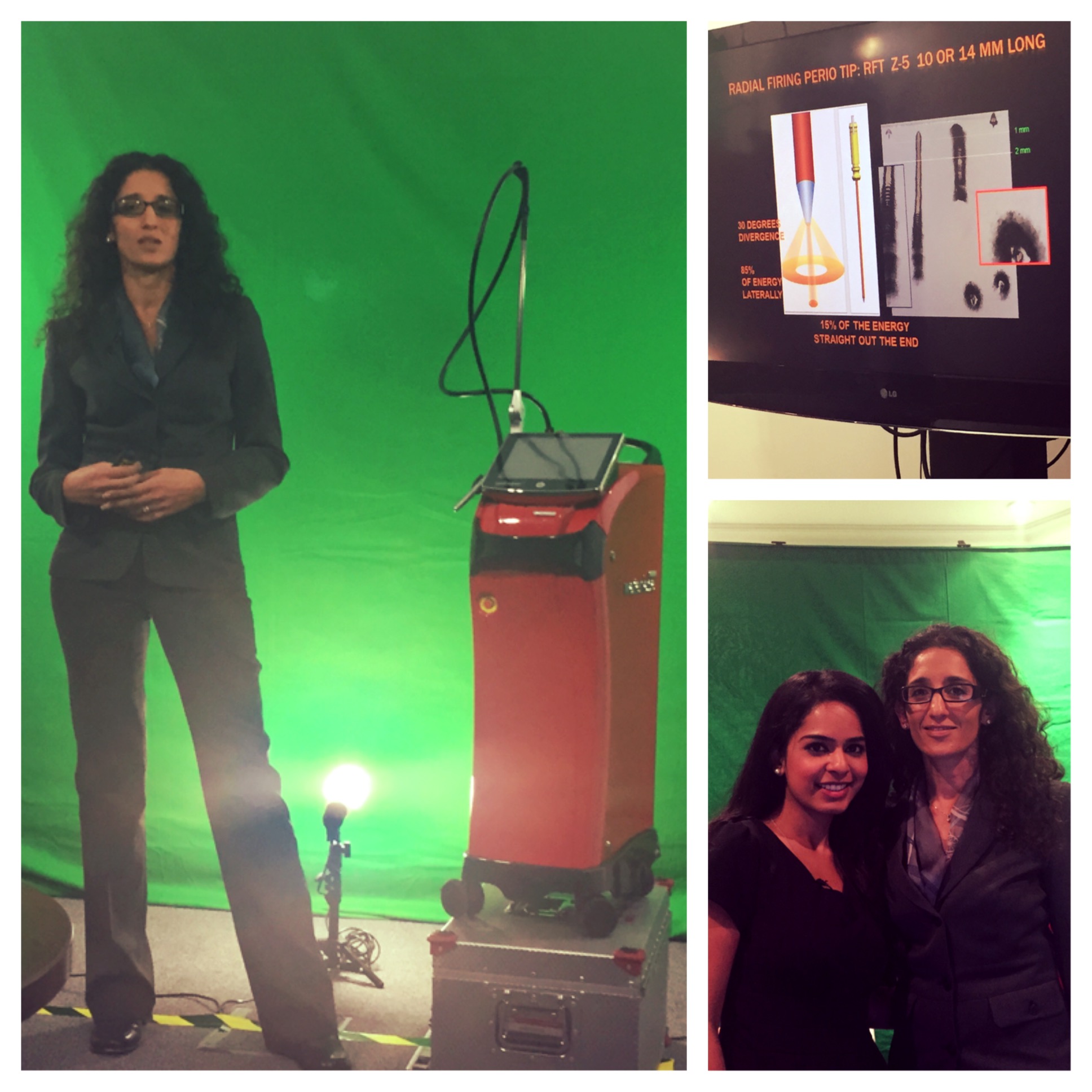Home/Articles
/ Periodontology /
Reena’s Notes: TubulesLive with Dr Rana Al-Falaki – Laser-Periodontics
November 10, 2014

- Lasers are a very useful tool in periodontics. They should be seen as an adjunct to conventional treatment instruments.
- The lasers that will be predominately discussed here are the Er,Cr:YSGG laser. The Waterlase is a water-cooled erbium, chromium: yttrium, Scandium Gallium Garnet laser that uses a 500-micron diameter tip to get into periodontal pockets.
- Clinical studies have shown that using this type of laser is: as effective as scaling and root planing, there is less recession, there is a stable clinical attachment gain over several years and it is minimally invasive (may be a suitable alternative to periodontal surgery).
- There has been suggestion that this laser may help to create an environment that will promote periodontal regeneration spontaneously. This may occur due to: removal of the biofilm/smear layer/toxins, provision of a surface attractive for periodontal attachment, removal of granulation tissue from the pocket lining and bone as well as the creation of a roughed/micro-abraded surface. It has also been postulated that the laser may cause release of bone morphogenic cytokines, affect osteogenic cell potential through cellular mediators and stimulate periodontal ligament stem cells.
- Photo-biomodulation consists of using a diode laser at a low level intensity. This may: stimulate periodontal ligament fibroblasts and stem cells, increase in pre-osteoblast cell proliferation, increase in alkaline phosphatase production, accelerate wound healing and reduce post-op pain and sensitivity.
- A radial firing tip (10 or 14 mm) results in a divergence of the laser beam and so 85% of the laser energy is emitted laterally – this is the ideal situation for a periodontal pocket.
- Advantages of minimal invasive laser therapy over traditional surgery: more patient friendly so ideal for nervous patients, less expensive, quick, good visibility as minimal bleeding, better aesthetics, less sensitivity especially when using the dual wavelength, can repeat, indicated for any age of patient and there are no medical contra-indications.
- Use of the Waterlase in periodontics: pocket elimination surgery, regenerative surgery, crown lengthening (flapless), gingivectomies, frenectomies, vestibular deepening, reverse vestibuloplasty, peri-implant disease, grafting and root coverage.



